|
Tingley Centennial: 1883 ~1983
THE TOWN of TINGLEY

Tingley Cornwall Arrives
Extracted from unpublished manuscript Recollections and History of Herbert F. CORNWALL,
courtesy of the late Cecil CORNWALL and from archival files of Clair B. HEYER.
 For many weeks Francis and Martha [(CARR)] CORNWALL, with their five children, had been driving their wagons westward
and by now they were over halfway across southern Iowa, a few miles south of the Mormon Trail. On the final leg of the
long journey, they crossed Sand Creek near the Union-Ringgold county line and calculated that it was the last stream
before reaching the farm of their elder son, Elihue. The parents could not hold the little boys - little Tingley
CORNWALL and his brothers broke away and scampered over the hill. Only two houses were in sight and they picked the right
one first. On this afternoon in 1856 there was a happy reunion of the CORNWALL and LUCAS families on the Iowa prairies,
far from their original homes in Ohio and Illinois.
For many weeks Francis and Martha [(CARR)] CORNWALL, with their five children, had been driving their wagons westward
and by now they were over halfway across southern Iowa, a few miles south of the Mormon Trail. On the final leg of the
long journey, they crossed Sand Creek near the Union-Ringgold county line and calculated that it was the last stream
before reaching the farm of their elder son, Elihue. The parents could not hold the little boys - little Tingley
CORNWALL and his brothers broke away and scampered over the hill. Only two houses were in sight and they picked the right
one first. On this afternoon in 1856 there was a happy reunion of the CORNWALL and LUCAS families on the Iowa prairies,
far from their original homes in Ohio and Illinois. The brothers and sisters, cousins, uncles and aunts - all would have
been amazed if they could have looked ahead 12 to 20 years to see that little "Ting" would help established a post office
and give his name to the new town of Tingley in Ringgold County, Iowa.

Origin of the Name Tingley
and Historical Review of Its Progress
by C. C. BOSWORTH
About 1867 before the B &M Railroad ws built through Union County or the Western Stage Company was running its old rattle traps
from Mount Ayr, a few of the settlers wanting mail facilities met at the home of Tingley CORNWALL, over the line in Union
County, to establish a post office at his home, agreeing to take ther turns carrying the mail from Afton, the nearest point,
to connect the stage line. The name of "Silver Street" was sent to the Post Office Department but was rejected, as there
was another office of that name in the state. Then Edgar SHELDON suggested CORNWALL should send his own name "Tingley." It
was accepted and Tingley CORNWALL was appointed postmaster. A year later, 1868, the Stage Company started a line of hacks
from Afton to Mount Ayr, making Edgar SHELDON'S place the halfway stations, and the post office was moved to SHELDON'S
with the farmers relieved as mail carriers. This was the reason it was moved from Union to Ringgold County; here it
remained for several years. Tingley and Union Township was called Sand Creek, six miles by twelve, and citizens voted at the
old Abner GOODELL place at Ellston.
Organization of Tingley Township
In the spring of 1870, a division of the two townships was made by a committee selected to make a careful invoice of the
assets in the way of schoolhouses, school funds, and road funds, giving to each township its share.
Edgar SHELDON had the
principal part of this work to do, and after the division of this township, took its name from the post office. Edgar SHELDON
was postmaster, township clerk, and secretary of the school board for years until the county said, "Well done, step up higher,"
and he was elected county surveyor, and later county auditor. He knew the lay of the land better than any of us and
could go to any section corner in the township, designated in those day sby the old government mounds, the stake in the center
with the number of the section cut in it.
First Assessment
I was the first assessor of Tingley Township, elected the fall of 1870 and making my assessment January 1871. My books
showed twenty-eight votes, and only four remain to claim their rights at the ballot box in Tingley Township. They are
A. F. HATHAWAY, Jacob FRANE, John ARCHIBOLD, and myself [C. C. BOSWORTH]. I remember Albert HATHAWAY "kicked" a little on
[the] valuation of his land - $3.00 per acre. I told him he would have to bear the burden, as that was the limit given me
by the board of supervisors. When I look at the broad acres he has gathered around him, worth from $50.00 to $60.00 per
acre now, and the "ROOSEVELT" family he has reared to manhood and womanhood, I think he is still "burdened" with an
honorably acquired wealth that but few of us has gained.
Land Value
Comparing valuation of land then and now, I think to have thrown the township on the market at $5,00 per
acre then would have been as good a sale as $50.00 per acre now.
First Railroad Election
in 1880 surveys began for the "Drake Line" called the Missouri, Iowa, and Nebraska Railroad and our township was called
upon for a five per cent tax to aid in building the same. Many of our citizens still remember the hot words used, pro and
con, at the old schoolhouse at the center of the township on the day of election. While we were voting, the surveyors
appeared east of where our town is now, which was of course a strong argument for the "pros." The tax carried, but, as the
now lamented Ex-Governor DRAKE afterwards sold out to the Wabash Railroad we were relieved of the tax burden. The survey was
completed and work commenced in 1881. The town of Tingley was platted by the "Town Site Company" the same year, purchasing
the land from the AVENELL Brothers, C. E. PERKINS, ex-president of the Burlington System, signing all deeds and contracts.
First Store
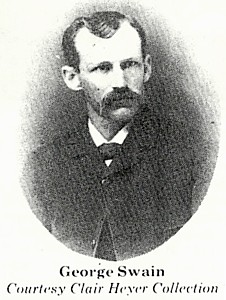 The first store building in Tingley, which still remains on the southwest corner of Main and Jefferson streets, was moved
across the prairie from old Eugene, a trading point, post office, and church and cemetery, two and one-half miles west
and one mile north of Tingley. George SWAIN was the owner and mover and kept his store open during all the days of its
"pilgramage." This was the fall of 1881. George SWAIN was the first merchant of the town. He still lives within its corporate
limits, is one of the leading taxpayers, and president of the schoolboard.
The first store building in Tingley, which still remains on the southwest corner of Main and Jefferson streets, was moved
across the prairie from old Eugene, a trading point, post office, and church and cemetery, two and one-half miles west
and one mile north of Tingley. George SWAIN was the owner and mover and kept his store open during all the days of its
"pilgramage." This was the fall of 1881. George SWAIN was the first merchant of the town. He still lives within its corporate
limits, is one of the leading taxpayers, and president of the schoolboard. NOTE: George SWAIN'S Store
in Eugene was a victim to the
1879 fire at Eugene. George was born February 28, 1854, the son of James and Eliza (TRUMAN) SWAIN. He married
Sarah DUNLAP (1859-1921) on April 20, 1881.
George died at the age of 74 years on June 29, 1929. They were interred at Tingley Cemetery.
First Train
The construction train blew its first whistle in Tingley September 18, 1882. Since then we have had daily trains except
when detained by the elements of nature. We have now and then used Knute NELSON'S "adjuectives" when they have not come up to our
idea of time, but they got here just the same.
Politics, Schools, Churches
Politically the township has always been Republican two to one, and the post office department will attest that Tingley
is not behind the amount of mail matter received to any like area in the country - a stronger proof of the intelligence of
her citizens than any words I can write. We old settlers remember how well-stuffed the old mail pouch used to be on
the weekly horse trip back across the prairie to the office at SHELDON'S, when the patrons were few and far between; some
difference now when we have three mails daily - a "Star Route" from Afton at 9:30 a.m., one from the west at 1:45 p.m., and
one from the east at 4:16 p.m., bringing Chicago daily papers printed the same day. When the Township School Board was
organized in 1871, I was elected school treaurer and have handled the school funds ever since. I do not mention this to
compliment the intelligence of the people, but as an example of tenacity in holding public office. In school matters,
Tingley has always kept up with the times. As the different districts settled up, schoolhouses were built till we had
our full complement of nine - one for every two square miles. When the town of Tingley was strong enough, District No. 6
was made the Independent District of Tingley and now we have a graded school of six rooms. Many of the more advanced scholars of the
rural district are proving its advantage.
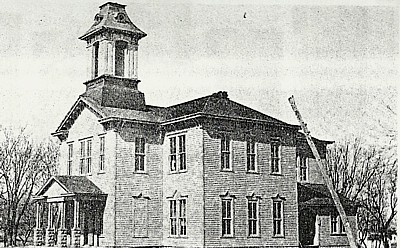
The town is well supplied with churches. The United Presbyterians, with a
membership of 209, have a good house of worship and parsonage, both worth about $5,000.00. The Christian Church has a
membership of 165, with church fixtures, and lot costing over $5,000.00. The
Methodist Church is an older building
and not so large, but the parsonage and grounds make up the deficiency. The membership of this charge is 130. Since the days
of the "pioneer circuit rider," the Methodist Church has always made its ministers do the driving instead of the members.
This in a measure accounts for the light membership here, as there are two charges besides this church under the same
pastorate. 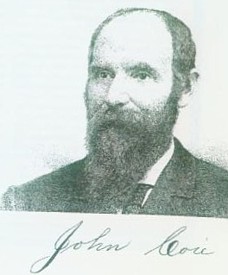
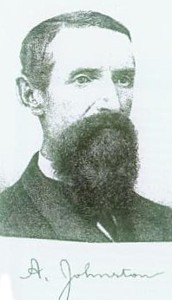 Young in years, though the township is, she has sent her citizens to fill places of honor and trust,
both in county and state.
The Hon. John COIE and the writer have represented the count in the State Legislature, as
did Capt. A[andrew]. JOHNSTON and
Rev. Wm. BROWN
from across the line in the adjoining township. To the sacred calling
fo rthe Gospel, she has sent four of her sons - W. B. and A. A. GILLIS and Ross HENDERSON, one at least with a D. D.
attached to his name. Rev. John HENDERSON, of the United Presbyterian Church.
Young in years, though the township is, she has sent her citizens to fill places of honor and trust,
both in county and state.
The Hon. John COIE and the writer have represented the count in the State Legislature, as
did Capt. A[andrew]. JOHNSTON and
Rev. Wm. BROWN
from across the line in the adjoining township. To the sacred calling
fo rthe Gospel, she has sent four of her sons - W. B. and A. A. GILLIS and Ross HENDERSON, one at least with a D. D.
attached to his name. Rev. John HENDERSON, of the United Presbyterian Church.
Tingley Admirably Located
Tingley is located in the famous "Blue Grass" region of suthern Iowa, mostly a high rolling prairie. The soil is rich
black loam. It is unsurpassed for agricultural purposes and stock raising, especially as a grass producing country,
pasturing as many cattle to the acres as any like area anywhere and making timothy see one of our great exports, sending
many carloads from our station every year. We conclude that such a country, dotted over with good homes filled with
contended, intelligent people, are ready with their means to keep up these landmarks of the highest type of
civilization - the schoolhouse and church. Certainly for such, none but a pessimist would portend anything but a bright future.
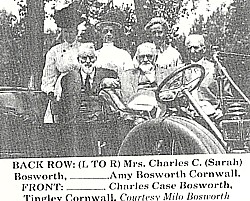
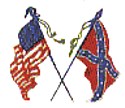 Hon. C. [Charles Case] BOSWORTH received a degree from Oberlin College. He was a member of the 7th Ohio
Infantry during the [civil] war. He served the county two terms as representative and took an active interest
in politics, attending nearly all the conventions of his party. He owned some properties in Tingley and a
prosperous store in Madrid, Iowa.
Hon. C. [Charles Case] BOSWORTH received a degree from Oberlin College. He was a member of the 7th Ohio
Infantry during the [civil] war. He served the county two terms as representative and took an active interest
in politics, attending nearly all the conventions of his party. He owned some properties in Tingley and a
prosperous store in Madrid, Iowa.
Early History by O. C. HOUSE
From Mount Ayr Record-News, August 27, 1932
Hyer Archival Files

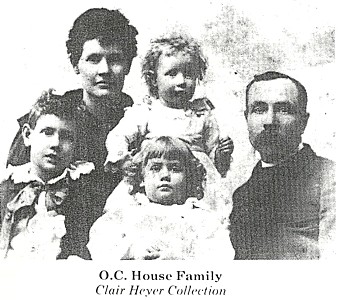 The new railroad from Humeston to Clarinda will have a station with that name and the grade is ready, although the rails are
laid only as far as Grand River east. There was some difficulty about the land which was to be the townsite, but the trouble
was removed and a townsite company bought the land and had it surveyed and streets and alleys laid out; thus, the town of
Tingley was established, although the railroad did not get here until the following fall.
The new railroad from Humeston to Clarinda will have a station with that name and the grade is ready, although the rails are
laid only as far as Grand River east. There was some difficulty about the land which was to be the townsite, but the trouble
was removed and a townsite company bought the land and had it surveyed and streets and alleys laid out; thus, the town of
Tingley was established, although the railroad did not get here until the following fall. About the first store building
was built in October 1881 by HOWLAND and McCREIGHT, who came from Promise City. Their store building was located on the
lot where Wm. S. BRECKENRIGE'S store now stands. The firm carried a general stock of merchandise. Among the first
buildings was George SWAIN'S, moved from Eugene abut the same time and located on the north side of main street.
Dr. L. E. St. JOHN built a store building on the lost now owned by John FRAZER on the south side of main street. GAVEY
and DILLEY built a room about the same time and put in a stock of furniture. Both buildings burned down about 1883 or 1884.
The doctor then built on the north side of the street where O. W. ROUSH'S drugstore is located. Before the railroad came
to town, goods were hauled by team from Mount Ayr. The BECKER Hotel, built just east of HALL'S Hardware store, also
was destroyed by fire. Willis KARR built a fine hotel building on the corner where the Tingley service station now stands. It
also burned. Until the town was incorporated in 1884, like all new towns, it sometimes ran wild. I have lived in Tingley
when there were three saloons running day and night. Prohibition may not always prohibit, but it drove these hell holes
out of our fair city for good. Before the town was started, there were several surveys made for a line north and south;
one passed between LENT'S garage and the Christian Church, and the other was east of town about one-half mile. Survey stakes
were driven, but nothing further developed. When the town was incorporated, it had a population of 392. At this time there were
two lumber yards, one harness shop, one grocery, three general stores, one hardware, one drugstore, a meat market, one law
office, one hotel, a farm implement store, one blacksmith shop, a furniture store, one paint shop, and one livery stable.
The town has had its ups and downs. At one time fire destroyed every building on the north side of main street from the
opera house to the Vindicator office. Messrs. GARVEY and DILLEY have the honor of building the first storeroom
in the new town for HOWLAND and McCREIGHT. The first buildings in town were placed on wooden blocks; later rock was hauled
from down on Grand River. When the town started, there were only two houses inside the corporation - one just south of the
depot occupied by N. L. MARSHALL, and one where T. W. DARBYSHIRE lives just north of the Methodist Church occupied by
Pat DEMPSY. At one time there were four church buildings in town - Presbyterian, Baptist, Christian, and Methodist.
For awhile church and Sunday School meetings were held in the Center School just east of town. The first school was upstairs
over the drugstore of V. D. COWLES where ROUSH'S drugstore is now. It was taught by Jessie GODFREY. We well remember
when the rails were laid in Tingley, late summer or early fall of 1882. It seems as if everyone living in the township was
here, making it seem like the Fourth of July. This was about 18th of September, 1882. After the town was incorporated in
1884, the first elected officers were: Mayor - C. C. BOSWORTH; councilmen - John HAVER, Pete GRABER, J. M. McCREIGHT,
Levi KNAPP, Levi HOWLAND, and Jim PARRISH; recorder - F. A. BOGGS; marshall - John HIXON; street commissioner - W. A.
GRAHAM; treasurer - John HAVER. As we remember, Dave McGREEVEY was the first section foreman on the Tingley section. He was
later promoted to road master. Although nearly destroyed by fire several times, Tingley is still on the map and
celebrating its 50th anniversary of existence.
NOTE:
O[rlando]. C. HOUSE was born August 20, 1852, Oswego County, New York, the son of Allen and E. C. (ENSLOW) HOUSE. He was
associated with the firm of HOUSE &CARNEY, dealers of wagons, buggies, wind mills and farm machinery in Tingley.
O. C. HOUSE married first
Evelyn Eva B. MORTON, born April 12, 1855, Henry County, Illinois and died of consumption at the age of 27 years in
1883 with interment at Eugene Cemetery. O. C. HOUSE married second on December 8, 1885
Emma F. HANCOCK, who was born August 2, 1861 near Melrose, Iowa. Emma died June 4, 1931, and Orlando died in 1939. They
were interred at Tingley Cemetery.
SOURCE: Tingley, Iowa Centennial: 1883 - 1983. Pp. 2-8. PSI, Inc. Belmond IA. 1983.
Courtesy of Mount Ayr Public Library, September of 2011
Transcription by Sharon R. Becker, September of 2011


|


